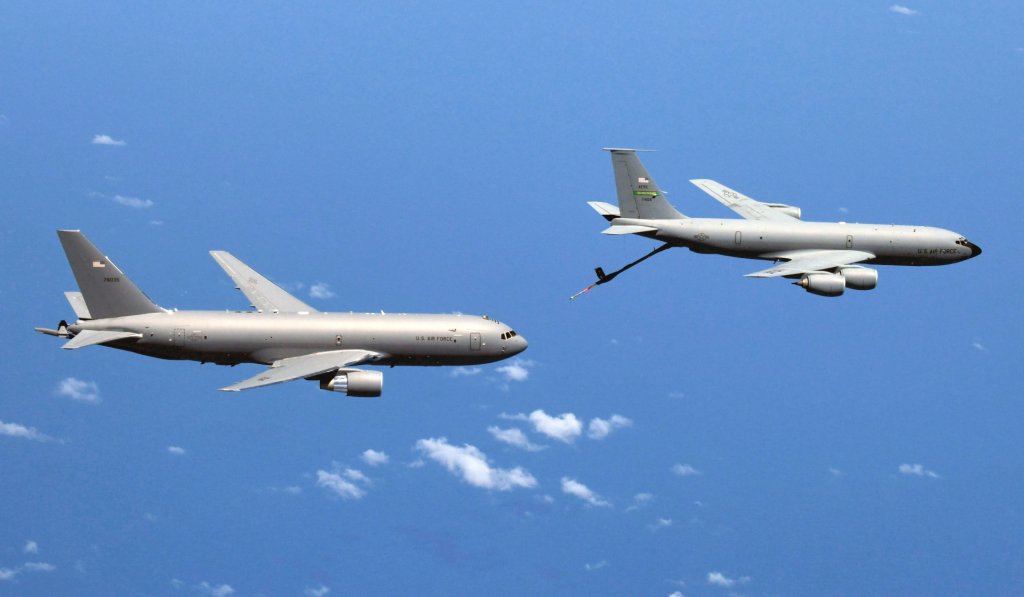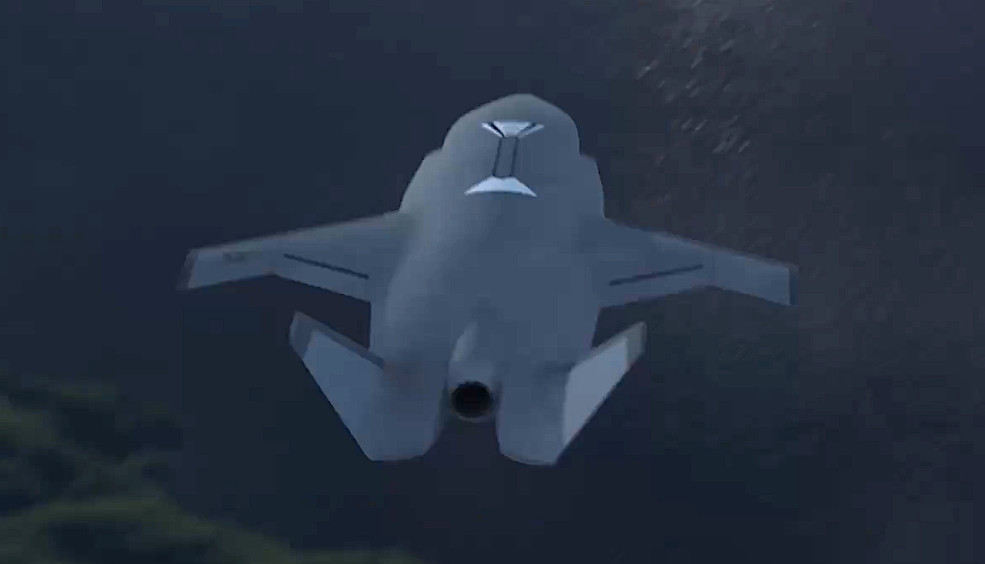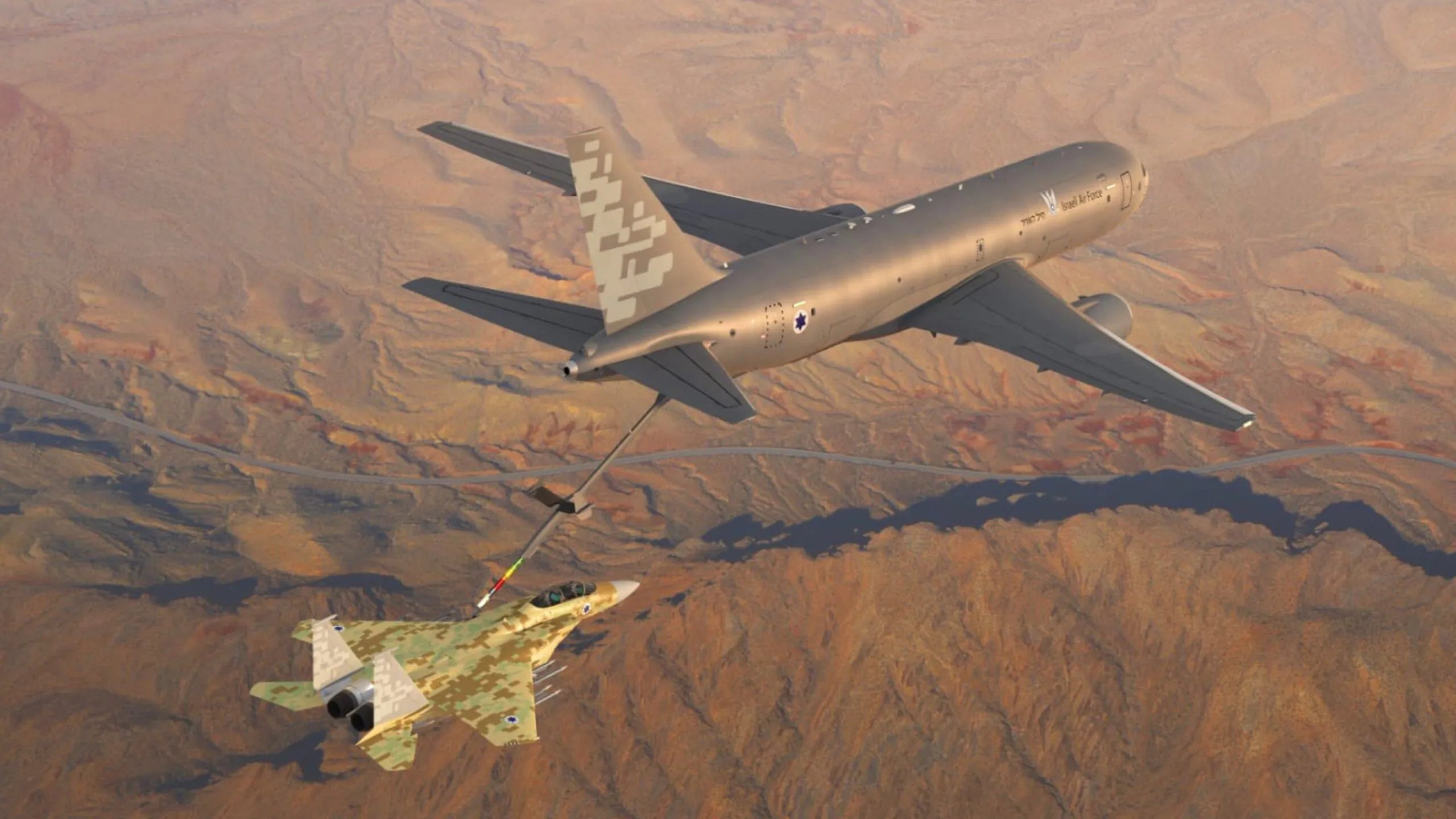Business Jet Aerial Refueling Tankers Eyed By USAF
A business jet converted into a tanker is among the options the U.S. Air Force has been considering as part of plans for a future aerial refueling ‘system of systems.’ The service is also still looking at stealthy designs and other options to meet its tanker needs going forward as the anti-air threat picture continues to expand and evolve.
“We are working on the Next Generation Air Refueling System, NGAS, as it’s effectively known. Put the finishing touches on that last year. And that was a really wide look at how we would do air refueling in the future,” Air Force Gen. John Lamontagne, head of Air Mobility Command (AMC), told TWZ and other outlets earlier this week. “When I say a wide look, looking at conventional tankers [as] we know it today, you know something like a [KC-]135 or KC-46 as is; something with a bunch of mission systems added to it, with a defense systems [sic], connectivity, intelligence and more; a business jet; a blended wing body; or a signature-managed [stealthy] tanker.”
“So, a pretty wide look at the effectiveness of those,” he added. “We still are looking at a pretty wide look.”

Lamontagne was speaking at a roundtable on the sidelines of the Air & Space Forces Association’s 2025 Air, Space, and Cyber Conference, at which TWZ was in attendance.
To provide some quick context, the Air Force currently has some 370 KC-135s and 96 KC-46s in its inventory. The service finished retiring its fleet of KC-10s last year. Under its existing contract with Boeing, the service expects to eventually receive 188 KC-46s, and it now has plans to acquire 75 more. What will eventually replace the last of the aging KC-135s, as well as fill the gap left by the departure of the KC-10s, remains to be seen. This is where NGAS, which continues to be described as a future family of capabilities, comes in.

Both the KC-135 and the KC-46 evolved parallel to or are based on full-size jet-powered transcontinental airliner designs, as was the now-retired KC-10. The KC-135 and KC-46 are also configured to refuel receivers primarily using the boom method, though they can also dispense gas via probe-and-drogue. The boom method is the Air Force’s preferred option when it comes to topping up the tanks on fixed-wing aircraft in mid-air.
A tanker converted from a business jet could offer a comparable cruising speed and service ceiling, but with lower operating and maintenance demands. It would also be able to take off and land from shorter runways and have more limited logistical needs, offering increased flexibility. The Air Force does currently envision future high-end operations centering on dispersed and distributed concepts of operations (CONOPS), collectively referred to as Agile Combat Employment (ACE), primarily to complicate enemy targeting cycles and reduce vulnerability. The U.S. Marine Corps has also been completely restructuring its forces around similar CONOPS in recent years.

At the same time, those comparative benefits come at the cost of maximum range and on-station time, and especially to the core of its entire reason for being — the total fuel available to offload to receivers. This could be offset to a degree by being able to fly from airstrips closer to operating areas. If the business jet-based tanker is itself able to refuel in mid-air, it could be utilized as one part of a multi-tier hub-and-spoke concept. Regardless, these aircraft will never be able to compete with offload capacity of the KC-135 or KC-46.
It’s also worth noting here that not every mission necessarily requires a full airliner-sized tanker. Business jet-based types could be used primarily to support more routine activities, especially in peacetime, like training and testing, and moving small numbers of fighters from point a to point b, freeing up larger tankers for more demanding operations. Simply not having to fly bigger tankers as often would also help reduce the wear and tear on those fleets.
Lower acquisition costs could also help the Air Force buy more business jet-based tankers. Depending on how they are configured, they could also be used as light transports when not needed for aerial refueling missions.
The idea of turning business jets into tankers is not new. At the Singapore Airshow in 2010, Israel Aerospace Industries (IAI) presented a concept for a boom-equipped tanker based on the Gulfstream G550, with a particular eye toward supporting training needs. An IAI brochure available at the show also reportedly depicted a hub-and-spoke refueling concept of operations, with the modified G550 acting as ‘spoke’ between a larger traditional tanker and tactical jets operating closer to the front lines.

The G550 is now out of production, but Gulfstream continues to produce other models that might serve as a starting point for new tankers. There are other options on the market, too. The Air Force and other branches of the U.S. military already operate multiple Gulfstream types, as well as members of the Bombardier Challenger family. This includes highly modified types in service to perform specialized missions, like the EA-37B Compass Call electronic warfare jet and the E-11A Battlefield Airborne Communications Node (BACN). Smaller airliners, including current-generation variants of the Boeing 737, could offer additional options for conversion into aerial refueling platforms.

There may be other, more novel avenues, as well. As part of a design challenge in 2023, the Air Force itself produced a graphic showing a business jet as one option for carrying a potential platform-agnostic boom-equipped refueling system, which could also be small enough to be fit on a tactical jet like the F-15. The service has been exploring concepts in this general vein for years now, which could also feed into a future NGAS family of systems.

As Lamontagne noted at the Air, Space, and Cyber Conference earlier this week, the Air Force is still taking “a pretty wide look” at potential NGAS options. The need for any future tanker to be able to survive in more contested environments remains top of mind for the service. The possibility of acquiring a fleet of stealthy tankers, something TWZ has long highlighted the growing need for, remains very much on the table. Tankers, as well as other critical supporting assets, would be top targets in any future major conflict, such as a potential high-end fight against China in the Pacific. On top of this, the Air Force has been publicly warning that the threat ecosystem is only set to continue expanding in the coming years, and that it predicts there to be anti-air missiles with ranges of up to 1,000 miles by 2050.
“Really, at the end of the day, we are trying to upscale and change the equation on our survivability,” Lamontagne said at the roundtable. “We’ve got to be able to go into much higher threat environments. … and so how do we do that with both the force that we have and, potentially, a new platform?”
The cost of a future stealthy tanker remains a significant factor in work on NGAS.
“The Secretary of the Air Force approved another request out to industry that was sent out just a few weeks ago with a return from industry in just a couple of weeks, and that is really to help us better understand some cost estimates,” the AMC commander added. “When we did the first analysis of alternatives on NGAS last winter, I would say those cost estimates were really rough on what a signature-managed platform might look like.”

“Is it an F-35 level of exquisite stealth with a KC-135-size platform, or something in between? Tough to cost,” he continued. “So we got some really rough costs associated with that first analysis of alternatives. This is really, at its simplest, an attempt to refine those costs, go back out to industry, and figure out what’s in the realm of the possible at the right level of signature management, if we go down that road.”
Regardless, “we still know that … our current tanker force is not going to serve us well in a high threat environment,” Lamontagne stressed. “So, we’re either going to need a really long stick, right, weapons that can go a long way and keep the tanker out of the WEZ [weapons engagement zone], or we’re going to be able to need to go in there and not just survive, but thrive.”
The timeline for fielding any NGAS capabilities, especially new tankers, whether they are converted business jets, stealthy designs, or something else, is also unclear. The Air Force’s stated goal in the past has been to begin fielding next-generation aerial refueling platforms no later than 2040, and hopefully well before then.
It’s also important to point out here that U.S. military officials have been warning for years now already about strains on the Air Force’s existing tanker fleets and raising concerns about its capacity to meet even existing demands. This has been compounded in part by persistent technical issues and quality control problems with the KC-46. The Air Force, as well as the U.S. Navy, has been making increasing use of private contractors in recent years to bolster their ability to meet non-combat-related aerial refueling needs.
At least as of this week, “just about every option is on the table” to help meet the Air Force’s still evolving requirements for NGAS, according to Lamontagne.
Contact the author: [email protected]






























